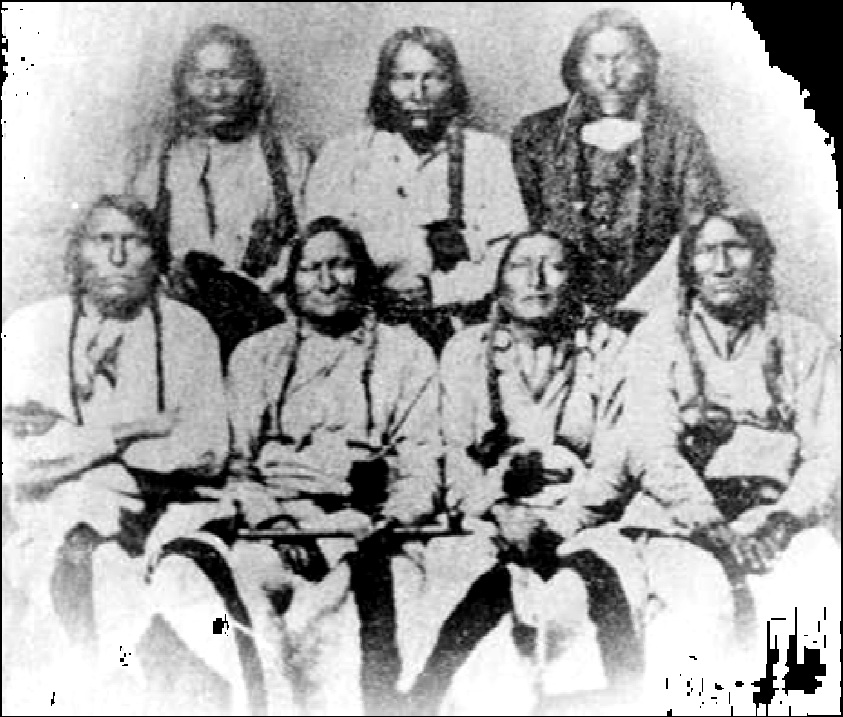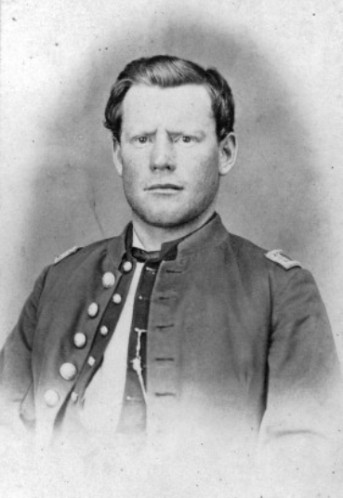Sand Creek Massacre
After I visited Bent’s Old Fort, I drove north some seventy
miles to one of the most shocking events of the Indian Wars. In the words of
the NPS, Sand Creek Massacre National Historic Site is “profound, symbolic, spiritual,
controversial, a site unlike any other in America.” The exchanges between
Europeans and Native Americans from first contact held both promise and peril.
This unit of the NPS memorializes the peril, where U.S. soldiers savagely attacked
a peaceful village of Cheyenne and Arapaho.
This history of the Sand Creek Massacre NHS contains graphic violence. Please don’t read on if this might upset you.
In November 1864, members of the U.S. Army descended on a
peaceful camp of Cheyenne and Arapahoe who displayed from their teepees the
American flag and a white flag of truce. Earlier that year, a different band of
Indians killed Nathan Hungate and his family. When their remains were displayed
in Denver, calls for vengeance rang out. Territorial Governor John Evans issued
a proclamation for “friendly Indian of the Plains” to assemble in safe havens
while authorizing settlers to “kill and destroy… hostile Indians.”[1]
This set the stage for the tragedy that fell on the peoples at Sand Creek who
had nothing to do with the Hungate killings.
 |
| Colorado Territorial Gov. John Evans (NPS exhibit panel at Sand Creek) |
Enter Col. John Chivington, hero of the 1862 Civil War
battle at Glorieta near Santa Fe which stopped the Confederate invasion of the West. After the battle, Chivington kept the Glorieta veterans of the 1st Regiment together while adding volunteers into the 3rd Colorado Cavalry. These men,
who missed the victory at Glorieta, had enlisted for only 100 days to fight the
“Indian War of 1864.” According to Park Ranger John Laudnius, the 3rd
Regiment was poorly trained, poorly equipped, and poorly disciplined.
| Col. John Chivington (http://civilwardailygazette.com/wp-content/uploads/2011/11/march26chivington.jpg) |
Why target this group of Cheyenne and Arapaho who had assembled
in the safe haven of Fort Lyons before setting up at Sand Creek? Many of the U.S.
troops, especially the 3rd Regiment had flocked to the territory of Colorado to
prospect for gold and silver and wanted land occupied by Native peoples.
Additionally, Gov. Evans wanted a transcontinental railroad to pass through
Colorado, which meant going through the land of the Cheyenne and Arapaho.
Total War
To be blunt, European colonists and then the United States has waged total war on Native
Americans for centuries. A year earlier, the army had destroyed crops of the
Navajo in the Four Corners region, attacked them during a winter campaign, and forced them on the Long
Walk to relocate 350 miles away. Total war targets the young, the families, the
elderly to break the support and the will which Indian warriors needed for
their armed resistance. Perhaps that accounts for the blood lust of the U.S. soldiers at Sand Creek.
 |
| The Encampment at Sand Creek was near the trees on the right. Soldiers came in from the right and the villagers fled to the creeks bank on the upper left (Photo by Hunner) |
On Nov. 28, 1864, Chivington led 675 men with four
12-pounder howitzers into the encampment along Sand Creek. Away
hunting, few adult male Indians were at the camps of Chiefs Black Kettle, White
Antelope, and Left Hand. At first the women, children, and elderly thought the
thundering hooves meant the return of the long lost bison. George Bent, son of Owl
Woman, a Cheyenne, and William Bent of Bent’s Fort on the Santa Fe Trail (see the May 16 blog) was at the camp: “By the dim light I could see the soldiers, charging
down on the camp from each side… at first the people stood huddled in the
village, but as the soldiers came on they broke and fled.”[2]
The U.S. troops killed indiscriminately as the Native peoples fled northwest
along the creeks banks. Sometimes the soldiers fired at point blank range into
the huddled families.
 |
| George Bent and his Cheyenne wife Magpie (http://www.nps.gov/sand/historyculture/images/georgemagpie) |
In total, 165 to 200 Cheyenne and Arapaho died, two thirds
of them women, children, and the elderly. Another 200 suffered wounds. Of the
675 soldiers, sixteen died, some from friendly fire, and seventy were wounded. Thirteen
Cheyenne and one Arapaho chief were killed along with any possibility for
peace. Chief Black Kettle, who survived the attack, continued his call for peace, but Cheyenne and Arapaho warriors retaliated by attacking settlers and
wagon trains in the region. The NPS calls the massacre “8 hours that changed
the Great Plains forever.”
 |
| Chief Black Kettle, holding a pipe in the front row, at a peace conference before Sand Creek (https://www.nps.gov/sand/learn/historyculture/images/Camp-Weld-Conference.jpg) |
Those Who Refused to Fire
Some of the U.S. soldiers disobeyed orders and did not fight. Led by
Captain Silas Soule, who had attended the peace talks earlier that fall, this
company of 100 soldiers refused to participate. Soule wrote an account of the
slaughter: “I refused to fire.and swore that none but a coward would. For by
this time, hundreds of women and children were coming towards us and getting on
their knees for mercy. Anthony shouted,
‘kill the sons of bitches’.” Soule continues with his report. “When the Indians
found that they there was no hope for them they went for the Creek and buried
themselves in the Sand and got under the banks…. By this time there was no
organization among our troops, they were a perfect mob.” As a result, Soule
recalls: “One squaw with her two children were on their knees begging for their
lives of a dozen soldiers, within ten feet of them all, firing – one who
succeeded in hitting the squaw in the thigh, when she took a knife and cut the
throats of her children. and then killed herself.” Soule’s company did not
fire a shot.[3]
 |
| Capt. Silas Soule (https://www.nps.gov/sand/learn/historyculture/images/Soule.jpg) |
Some soldiers took body parts as trophies which they paraded
through the streets of Denver. The Cheyenne and Arapaho did not return to the
site nor did the soldiers bury those they killed. In 1868, General William Tecumseh
Sherman toured Sand Creek and found human bones scattered around. He sent them
back to Washington for ballistic analysis on the effectiveness of the weapons
used. These human remains eventually were deposited at the Smithsonian. After
the Native American Graves Protection Act (NAGPRA) passed in 1990, all federal
institutions which held native human remains or sacred objects had to contact
the relevant tribes to repatriate them. At the Sand Creek Massacre NHS, a
Repatriation field on the bluff overlooking the creek bed now holds these
remains along with those body parts chopped from the slain that have been returned
by the descendants of the soldiers.
In the aftermath of the attack, a Congressional Joint
Committee on the Conduct of the War found that Chivington had “surprised and
murdered in cold blood…unsuspecting men, women, and children… who had every
reason to believe that they were under [U.S.] protection.”[4]
Unprovoked attacks, broken treaties, and dispossession of ancestral lands are
perils of contact that our tribes and our country continue to grapple with
today.
 |
| The Repatriation Field at Sand Creek (Photo by Hunner) |
When I first arrived at the visitors’ center, a sun burned couple
was asking Ranger John Laudnius questions about the place and the event. John
mentioned that a rifle from that killing field came up for auction, and the NPS
bought it. The park then consulted with tribal elders on what to do with it.
They asked for the park to break it up into small pieces and destroy it. The
woman gasped and said it was a valuable artifact. I replied that it was used to
kill these tribal elders’ ancestors so destroying it made sense to me. The NPS
did not destroy the rifle, but did not exhibit it either.
Native American World Views
I talked with Ranger John about this more. He explained that
native peoples look at and understand the world and history differently than European
Americans. When I pressed him about this, he said: Europeans think of time
linearly. All things happen on a
distinct time line. Native Americans understand time cyclically and so tell
their histories differently. Tribes transmit their histories orally and when a
grandfather tells a story and you retell that story, you tell it as if you are
your grandfather. A further complication with oral tradition emerges since
tribal histories are told in their own languages. When the NPS translated those
Cheyenne and Arapaho stories to English, this filter changed the narratives. From
my interaction with Native Americans in New Mexico, I am continually amazed at
how they perceive and understand the world.
After talking with John, I walked up the hill to the
overlook of the massacre site. It is peaceful today. Crickets chirped along the
trail to the overlook. Whippoorwills sang, an owl hooted from the cottonwoods
that lined the dry creek bed. At the top of the hill with the encampment and massacre
site spread out below, I imagined the chaos and horror as parents frantically
fled or dug shallow holes in the sand to hide their children and themselves.
As I walked back to the visitors’ center, I saw a lone
nighthawk swooping over the cottonwoods. I thought of Sen. Ben Nighthorse
Campbell, a Cheyenne who helped create this park in 2000. For today’s Cheyenne
and Arapaho, this is a place of medicine to heal wounds. The actual creek bed
of the massacre site is off limits to the public. A sign hangs on the overlook
barrier: “Help respect sacred ground. Please stay on this side of the fence.”
 |
| The battlefield from the Overlook with signs that say "Help Respect Sacred Ground." (Photo by Hunner) |
We are no stranger to inhumane treatment of our peoples.
Slavery, Indian wars, and Japanese-American internment camps are some of our
biggest failures to live up to the ideals of the Declaration of Independence
and our Constitution. It is a tribute to our country’s self-reflection that we
have units of the NPS which preserve these tragedies. We will visit the battlefields of wars of national destiny and wars of choice, the underground railroads,
the internment camps as well as the successes of our nation. They are important
parts of our nation’s narrative. We will continue to celebrate our successes
and our failures. In doing this, I am just following the lead of our nation's parks.
In 2000, Congress passed, and President Clinton signed the
bill creating the Sand Creek Massacre National Historic Site. It opened to the
public in 2007.